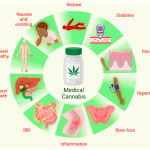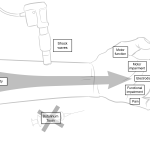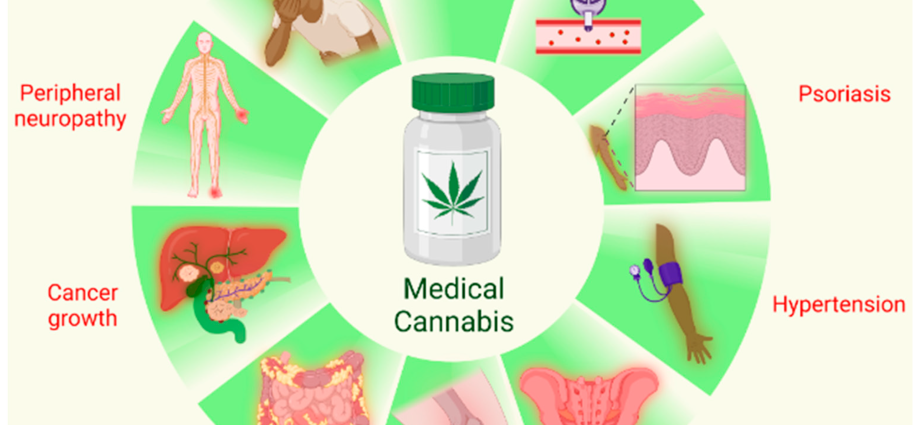For centuries, long before modern pharmaceuticals, people turned to the cannabis plant for relief. Today, we’re witnessing a remarkable renaissance. A shift. The conversation around medical cannabis and cannabinoid therapeutics for pain management is moving from the fringe to the forefront of medicine.
And honestly, it’s about time. For millions living with chronic pain, the old playbook of opioids and NSAIDs often comes with a heavy cost—dependence, tolerance, and a slew of side effects. So, what if there was another path? Let’s dive into how this ancient plant is offering new hope.
Beyond the High: Understanding the Body’s Own Cannabis System
First things first, let’s clear the air. The goal of medical cannabis for pain isn’t necessarily to get “high.” In fact, the therapeutic effects come from a complex interaction with a system already hard at work inside you: the endocannabinoid system (ECS).
Think of your ECS as a master regulator. It’s a vast network of receptors and signaling molecules that helps maintain balance—or homeostasis—in your body. It fine-tunes everything from mood and sleep to, you guessed it, the perception of pain. When you introduce plant-based cannabinoids (phytocannabinoids), they essentially tap into this existing network, helping to modulate signals and calm the storm.
The Key Players: THC, CBD, and the Entourage Effect
You’ve probably heard of THC and CBD. They’re the headliners, but they’re not the whole show.
- THC (Tetrahydrocannabinol): This is the one with psychoactive properties—it’s what creates the “high.” But it’s also a powerful analgesic, or pain reliever. It binds directly to receptors in the brain and nervous system, turning down the volume on pain signals.
- CBD (Cannabidiol): CBD is the non-intoxicating rockstar. It doesn’t get you high. Instead, it works more subtly, influencing receptors and boosting your body’s own endocannabinoids. It’s known for its anti-inflammatory and anti-anxiety effects, which can be a huge part of managing chronic pain.
Here’s the really fascinating part: the entourage effect. This is the idea that all the compounds in the cannabis plant—the hundreds of cannabinoids, terpenes (which give it aroma), and flavonoids—work better together than in isolation. It’s a symphony, not a solo act. Isolating THC might give you pain relief, but adding CBD and other components can enhance that relief while mitigating unwanted side effects like anxiety or paranoia.
Where the Rubber Meets the Road: Conditions and Evidence
So, what kind of pain are we talking about? The research, while still evolving, is incredibly promising for several tough-to-treat conditions.
Neuropathic Pain: This is nerve pain—often described as burning, shooting, or tingling. It’s notoriously resistant to traditional painkillers like ibuprofen or even opioids. Studies have shown that cannabis and cannabinoids can provide significant relief for neuropathic pain associated with diabetes, HIV, and shingles.
Chronic Pain & Inflammation: For conditions like arthritis and fibromyalgia, where inflammation and widespread pain are the main events, cannabis can be a dual-threat. CBD’s anti-inflammatory properties can help at the source, while THC can alter the pain perception. It’s a one-two punch.
Cancer-Related Pain: This isn’t just about the disease itself, but also the brutal side effects of chemotherapy—like nausea and nerve pain. Medical cannabis has become a go-to for many oncology patients to improve their quality of life during treatment.
And then there’s the elephant in the room: the opioid crisis. A growing body of evidence suggests that in states with medical cannabis laws, there are significant reductions in opioid prescriptions and overdose deaths. It’s not a magic bullet, but it’s a potentially life-saving tool in the harm reduction toolkit.
Navigating the Options: A Practical Guide to Forms and Consumption
Okay, so you’re interested. But the world of medical cannabis can feel overwhelming. Do you smoke it? Eat it? Use an oil? The method of consumption matters—a lot. It affects how quickly you feel effects, how long they last, and the overall experience.
| Method | Onset of Effects | Duration | Best For |
| Oils/Tinctures (under the tongue) | 15-30 minutes | 4-6 hours | Precise dosing, longer-lasting relief |
| Vaporizing/Inhalation | Almost immediate | 2-4 hours | Fast-acting relief for acute pain flares |
| Edibles (gummies, capsules) | 1-2 hours | 6-8+ hours | Sustained, all-day relief (start low, go slow!) |
| Topicals (creams, balms) | Varies | Varies | Localized pain, inflammation; no psychoactive effects |
See, inhalation (like vaporizing) gets the compounds into your bloodstream quickly—great for a sudden spike in pain. But edibles and oils, while slower to kick in, provide a much longer, steadier release. It’s the difference between a sprint and a marathon. Topicals are a whole different ballgame; they work right where you apply them, perfect for a sore knee or a stiff back without any mental effects.
It’s Not All Sunshine and Rainbows: Considering the Risks
Let’s be real for a second. No medicine is perfect. Cannabinoid therapeutics come with their own set of considerations. Common side effects can include dry mouth, dizziness, and changes in appetite. With higher THC products, some people experience temporary anxiety or short-term memory impairment.
That said, the risk profile is generally considered much safer than that of opioids. The key, as with any therapeutic, is to work with a knowledgeable healthcare provider. Self-medicating can be a gamble. A doctor can help you navigate strains, THC-to-CBD ratios, and dosages to find your personal “sweet spot” for pain relief with minimal side effects.
A Final Thought: The Future is Personalized
We’re standing at the edge of a new frontier in pain management. The old model of one-size-fits-all pills is, well, showing its age. The promise of medical cannabis and cannabinoid therapeutics lies in their ability to be tailored. Your body, your ECS, your pain—it’s all unique.
The journey isn’t about finding a miracle cure. It’s about finding a better, more harmonious way to manage a life with pain. To reclaim a sense of control. The research will continue, the laws will (hopefully) evolve, but for now, this ancient remedy is offering a profoundly modern kind of hope. And that’s a future worth exploring.











